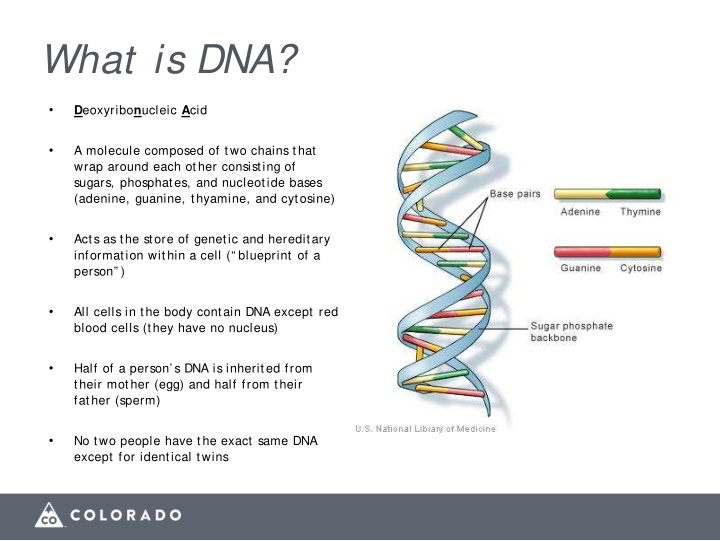



What is DNA? • D eoxyribo n ucleic A cid • A molecule composed of two chains that wrap around each other consisting of sugars, phosphates, and nucleotide bases (adenine, guanine, thyamine, and cytosine) • Acts as the store of genetic and hereditary information within a cell (“ blueprint of a person” ) • All cells in the body contain DNA except red blood cells (they have no nucleus) • Half of a person’ s DNA is inherited from their mother (egg) and half from their father (sperm) • No two people have the exact same DNA except for identical twins
Genet ic Genealogy • Is the use of DNA testing in combo with traditional genealogical methods and historical records • Individuals use companies such 23 & Me, Ancestry, My Heritage, and Family Tree to find out about their ancestry, build their family tree, find adopted family members, etc., and can upload their DNA file to GEDmatch and/ or Family Tree DNA (public databases for genetic genealogy info) • Some public databases can also be accessed by law enforcement agencies to search DNA profiles developed from crime scene evidence • If a familial association is reported from the databases, professional genealogists conduct extensive research on the familial relationship to the possible suspect Degree of relatedness reported from the databases as centimorgans (cM) o Building family trees using public records (such as birth/ death certificates, marriage licenses, social media, o etc.) additional DNA testing of these individual’ s DNA is completed to be compared to the crime scene evidence o
Genet ic Genealogy C = cousin R = removed Forensic S cience International
Recommend
More recommend